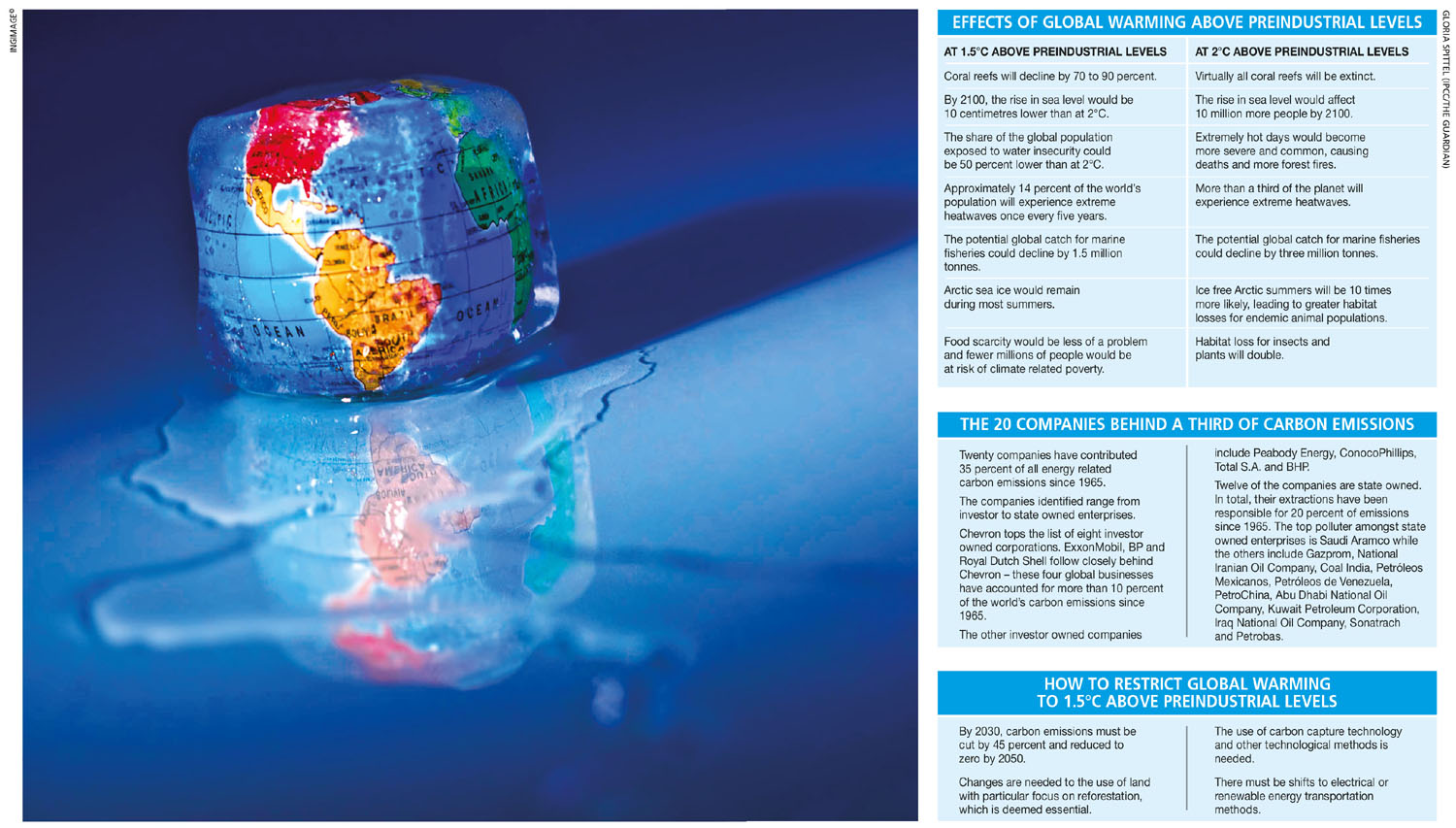GLOBAL WARMING
THE ’10 YEARS TO ACT’ CALL
The people must spread the word to protect the vulnerable from climate change – Gloria Spittel
Happy New Year! Welcome to 2020. There is a mere 10 years – a single decade – to take decisive action to prevent catastrophic and irreversible global climate change. The goal is to limit the increase in the global average temperature to a maximum of 1.5°C – a limit aspired to in the 2015 Paris Agreement, which set 2°C as its first target.
 Beyond the 1.5°C mark, climate scientists warn of dire consequences ranging from heightened risks of frequent and prolonged droughts, floods, extreme heat and cold, and climate related poverty for millions of people.
Beyond the 1.5°C mark, climate scientists warn of dire consequences ranging from heightened risks of frequent and prolonged droughts, floods, extreme heat and cold, and climate related poverty for millions of people.
The ‘10 years to act’ mindset may seem alarmist at first but to some who have invested and been interested in climate change since conversations around the impact of global warming began 40 years ago, this is a clarion call for action.
To add more salt to the wound, the environmental impact of fossil fuels was known as far back as 1965 by both industry leaders and politicians. And fossil fuel combustion – be it oil, gas or coal – is still a massive contributor to global carbon emissions.
The timeline of 12 years and a revised limit of 1.5°C were first published in a groundbreaking special report titled ‘Global Warming of 1.5°C’ by the UN’s IPCC in October 2018. This report was drafted by three IPCC working groups consisting of 91 authors and editors from 40 countries examining over 6,000 scientific studies. It stated that the global average temperature is likely to reach 1.5°C above preindustrial levels between 2030 and 2052 if the current status quo in temperature rises remains the same.
This report had an immediate effect on the media, resulting in a change in how we think and talk about climate change. In effect, the timeline gave the climate change discussion the urgency it needed.
But it was not the only report of its kind, and what followed in the next 12 months buttressed and buoyed the shockwaves. Month after month, climate scientists working in international bodies released reports that called for action before there’s irreversible damage.
In November 2018 for instance, the US Fourth National Climate Assessment detailed the impacts of climate change on human health and safety, quality of life and rate of economic growth.
The following December, WHO released a report on health and climate change, which found that meeting the goals outlined in the Paris Agreement could save approximately one million lives worldwide by 2050 through reductions in air pollution alone.
Exposure to air pollution causes seven million deaths globally and in the 15 countries that emit the most greenhouse gases, it’s estimated to cost four percent of GDP. Major contributors to deteriorating air quality are fossil fuel powered electricity and transportation amongst others.
Reports continued to provide dire news about the climate throughout last year. In April, a study funded by NASA reported that the rate of ice loss from the Greenland ice sheet into the ocean increased six times since the 1980s. Then in May, a report on biodiversity – including indigenous and local knowledge across 50 countries – stated that one million plant and animal species are threatened with extinction.
But there was more sad and alarming news to come.In August, the IPCC released another special report titled ‘Climate Change and Land’ followed by the ‘Ocean and Cryosphere in a Changing Climate’ special report a month later.
The former found that agriculture, food production and deforestation are major contributors to climate change but natural land processes absorb nearly a third of fossil fuel carbon emissions. And the latter reported increased ocean warming and acidification, more melting ice and a subsequent rise of sea levels – and this in turn will increase extreme sea level events.
Such events will have a profound impact on people who live in these areas.
At the time of writing, the UN Climate Change Conference or COP25 was in progress in Madrid; but by now, we know that the outcome of the meeting may provide more information on the dire straits of the environment. There will be more information but what should be done with this knowledge?
So climate change is nondiscriminatory in that it permeates and affects various industries and segments of human life. But because of existing socioeconomic parameters and other geographical considerations, there are more vulnerable sections of people.
And to protect vulnerable people, ecosystems and various species, and ourselves (while still pressuring bigwigs in industry and government to act), there’s action that can be taken – so spread the word!
Get informed, be informed, stay informed and begin a conversation; it may lead to a strike that sparks the political will required to hold back the river.
And once again, happy New Year!



